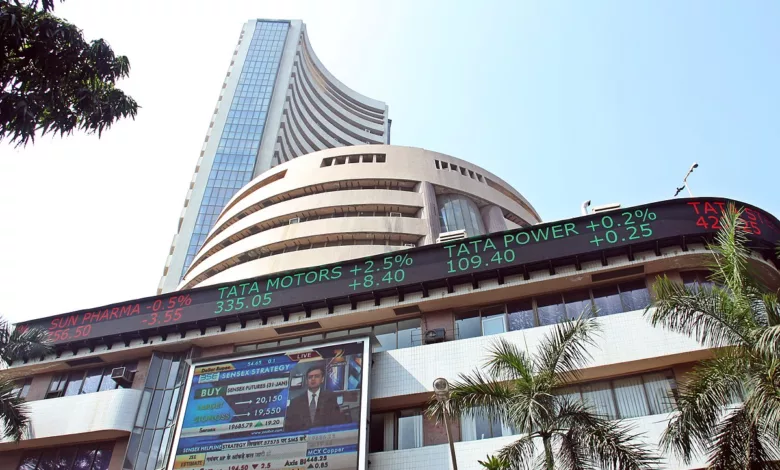India Reclaims 5th Largest Equity Market By Value In The World.
According to estimates, India's market capitalization was $3.15 trillion on Friday, edging France back into second place while the UK maintained seventh place. According to the report, India had lost its position to France due to a selloff of Adani shares.

India Reclaims 5th Largest Equity Market By Value In The World.
HIGHLIGHTS
- India’s market value fell below France’s after Adani’s stock dropped dramatically last month.
- The UK continues to rank seventh among the world’s leading equities markets.
- A favourable forecast for earnings growth also gave Indian indices a boost.
- The market capitalization of Indian stocks was still 6% lower than it was on January 24.
India has taken back fifth place on the list of the largest equities markets in the world. According to the report, India had lost its position to France due to a selloff of Adani shares. The country’s market capitalization increased on Friday to $3.15 trillion, surpassing France, according to data gathered by the media source.
The likelihood of earnings growth also contributed to increasing investor interest in Indian stocks, which have outperformed other global exchanges over the past two years. However, compared to January 24, the day before the Adani stock selloff started, the overall value of the Indian market was nearly 6% lower. The group’s actions have assisted some degree of value restoration for its shares, but they are still worth $120 billion less than they were before the drop.

Adani selloff.
Adani was charged with stock manipulation and improper exploitation of offshore tax havens in a report released in January by short seller Hindenburg. Additionally, it raised issues with the conglomerate’s inflated values.
The Hindenburg report was “a purposeful compilation of calculated falsehoods and stale, unsupported, and discredited accusations that have been challenged and denied by India’s highest courts,” according to the Adani group.
Adani’s stock, however, smashed due to the Hindenburg research report. Later, the group cancelled its follow-on public offer (FPO) for Rs 20,000 crore, with chairman Gautam Adani saying that doing so would “not be morally correct” given the erratic market.
After re-evaluating the number of openly traded shares, index provider Morgan Stanley Capital International (MSCI) reduced the weightings of four Adani Enterprises in its indexes. The Securities and Exchange Board of India is also looking into the company concerning the cancellation of its FPO.
The Indian stock market this month.
Foreign investors were net purchasers during two of the seven sessions in February up until Thursday, February 9, after withdrawing money from Indian shares since November. The purchases came after the Reserve Bank of India raised its repo rate, indicating a slower path of interest rate increases. The preface of the Union Budget 2023–24 increased capital spending.
FPI Selloff Craze Continues

The PTI report states that foreign investors withdrew 28,852 crores from Indian stocks in January, which is the worst outflow since June 2022, when they withdrew 50,203 crores. After net investments of 11,119 crores in December and 36,238 crores in November, this occurred.
Analysts attribute the decline to several causes, like the expensive valuations of Indian shares compared to their worldwide competitors, the restructuring of capital to China and Taiwan for their substantially cheaper valuations, and Beijing’s reopening and relaxing of COVID-19 rules.
Oil and gas, consumer durables, and financials saw significant foreign investor sales. The largest yearly outflow occurred in CY22 when FPIs sold Indian shares worth Rs. 1.21 lakh billion. Before this, there had been a record-high outflow when foreign investors sold Indian stocks worth $53,000 crore in 2008 during the world financial crisis.
Rupee is under pressure from depreciation.
In the first three weeks of January 2023, the Indian rupee appreciated by 1.60%, getting off to a stable start. With a loss of 1.18% at 81.73 against the USD at the end of January, it had given up its gains throughout the month.
The Indian Rupee had the worst year of any Asian currency in 2022, falling 11.3%, the most since 2013. The rupee’s value against the dollar decreased from 74.33 at the end of 2021 to 82.72 at the year’s end. Because exports have plateaued and the current account deficit has widened, the domestic currency has continued to be under pressure.
According to the latest data from the RBI, a more significant trade gap caused the country’s current account deficit (CAD) to increase from 2.2% in April-June to 4.4% of GDP in the quarter that ended in September. Additionally, the US Fed’s ongoing rate increases have raised US Treasury bond yields, luring investors looking for greater profits than they can get elsewhere.
Stocks in the IT sector are soaring.

Some areas of the market are still optimistic despite the worries. Some industries have done well this year, including technology and the car industry. Nifty IT, which had the worst year in 2022 and lost over 26% of its value due to economic downturn fears, has done remarkably well this year on the strength of high profits from IT firms. TCS, which opened the third quarter’s earnings season, outperformed analyst expectations with solid results for the December quarter.
In a similar vein, Infosys, HCL, Tech Mahindra, and Wipro, other influential players in the IT industry, also reported good results for the three months ending in December. The Nifty IT Index has gained around 2,200 points in 2023, going from 28,621 to 30,821 points, for a return of 7.68%. The Nifty IT stocks increased due to investors’ preference for the industry, which could withstand economic difficulties and has sustained development potential.
The Nifty’s 2023 position.
Global brokerage giant Goldman Sachs predicted that the benchmark Nifty50 would reach 20,500 by December 2023 in its outlook for India released in December last year. The firm added that due to high valuations, India is unlikely to beat its counterparts in 2023.
Due to “stronger internal fundamentals,” the Indian market has performed well in 2022; nevertheless, values have increased compared to its international counterparts. The firm predicted that this year, India’s equities market performance would probably lag behind that of China and Korea. The Nifty 50 is expected to reach 21,400 by 2023, as predicted by domestic brokerage firm ICICI Direct Research, with significant support at the 16,200 level.
Edited by Prakriti Arora




